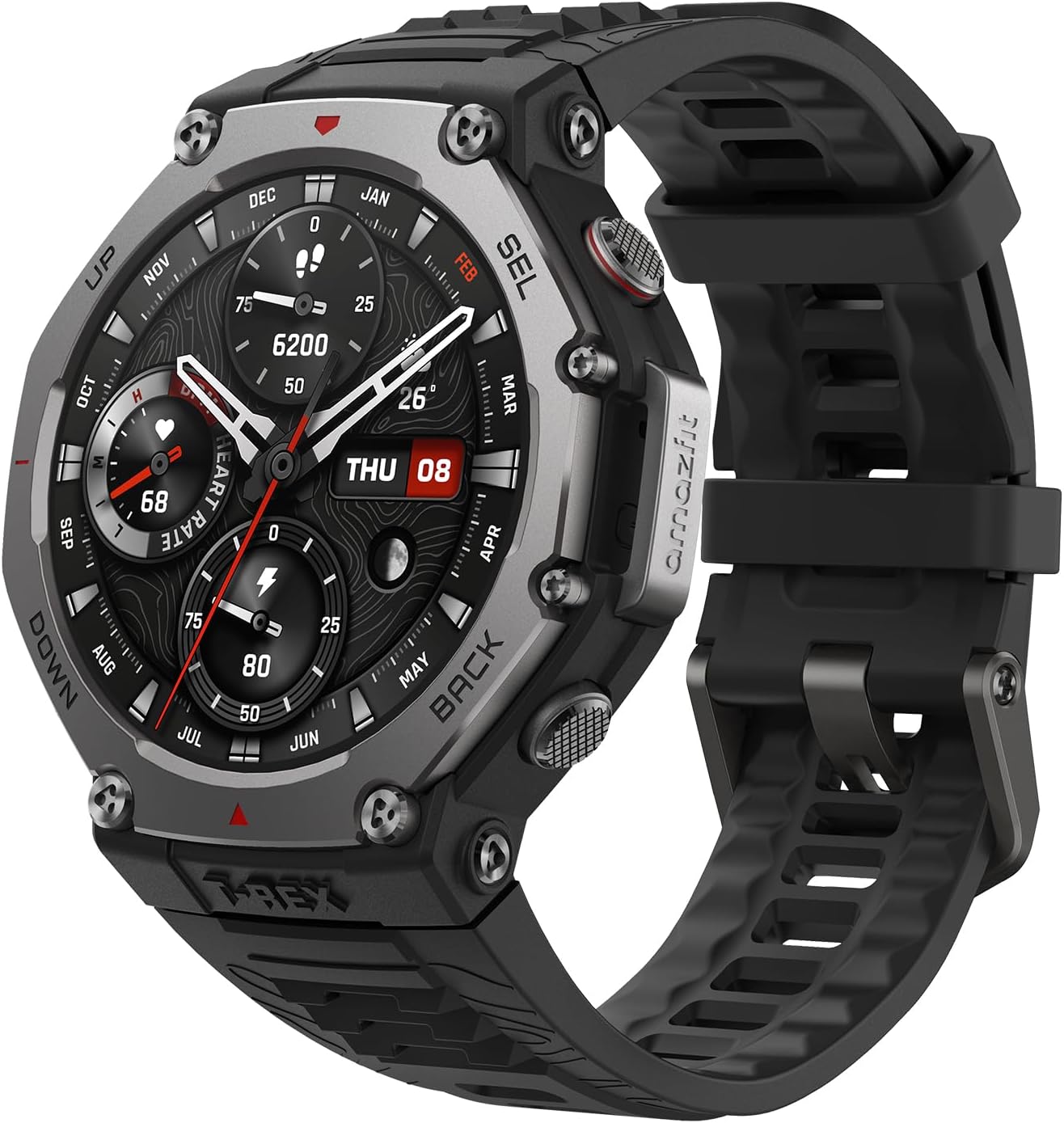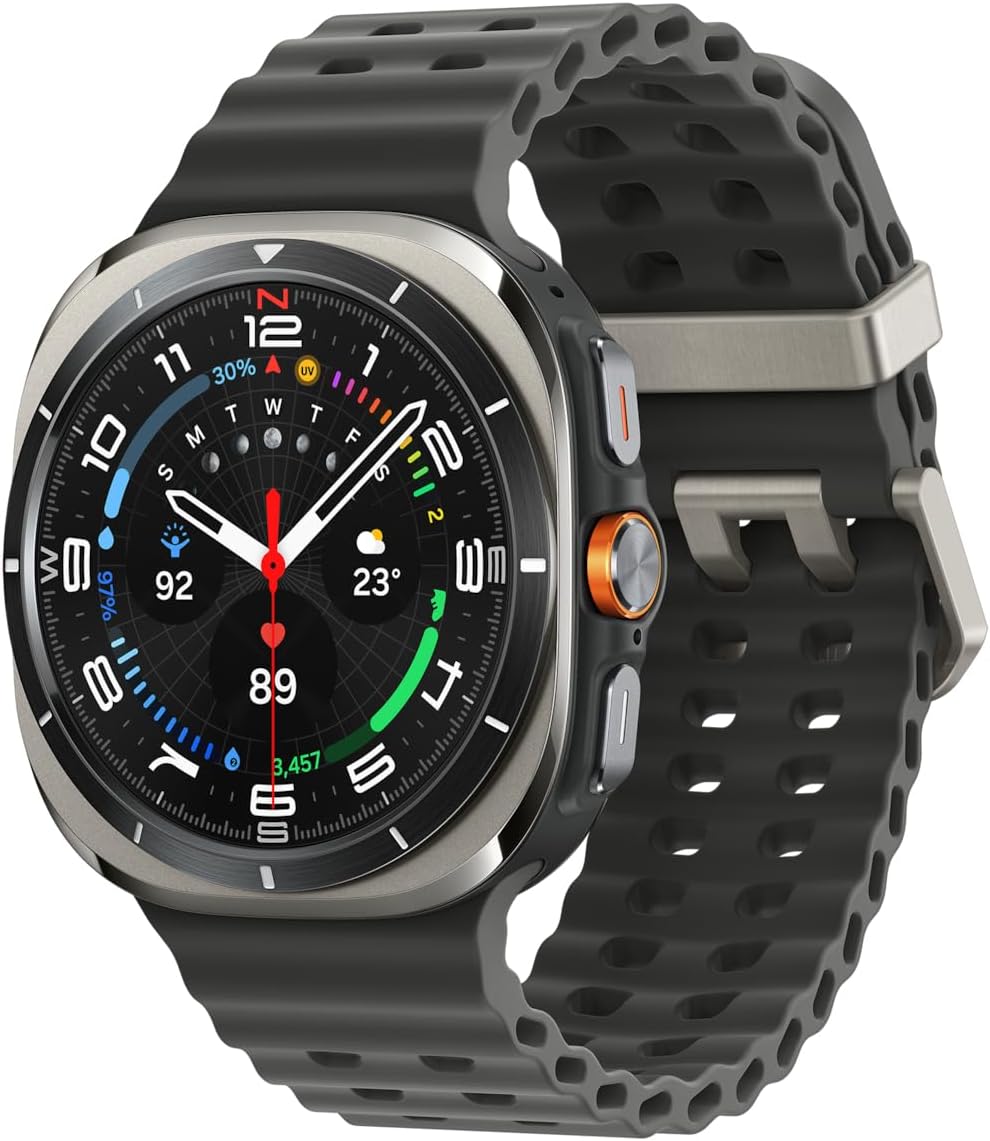Sometimes, we just need something that can keep up. Not in theory, not “in ideal conditions,” but for real—on the trail, under the rain, when the GPS is draining our phone and our fingers are frozen. That’s when an outdoor smartwatch becomes less of a luxury and more of a must. And right now, the Amazfit T-Rex 3 and the Samsung Galaxy Watch Ultra are battling for that spot on your wrist.
We were skeptical at first—how different could two “rugged” smartwatches be? But the more we wore them, the more they felt like opposite answers to the same question. The T-Rex 3 is all-in on endurance and toughness, while the Galaxy Watch Ultra is built for sophistication and smart features without backing down from the wild.
So, if you’re choosing between brute force and polished power, keep reading. Let’s dig into the real differences between these two contenders.
Looks that tell two very different stories
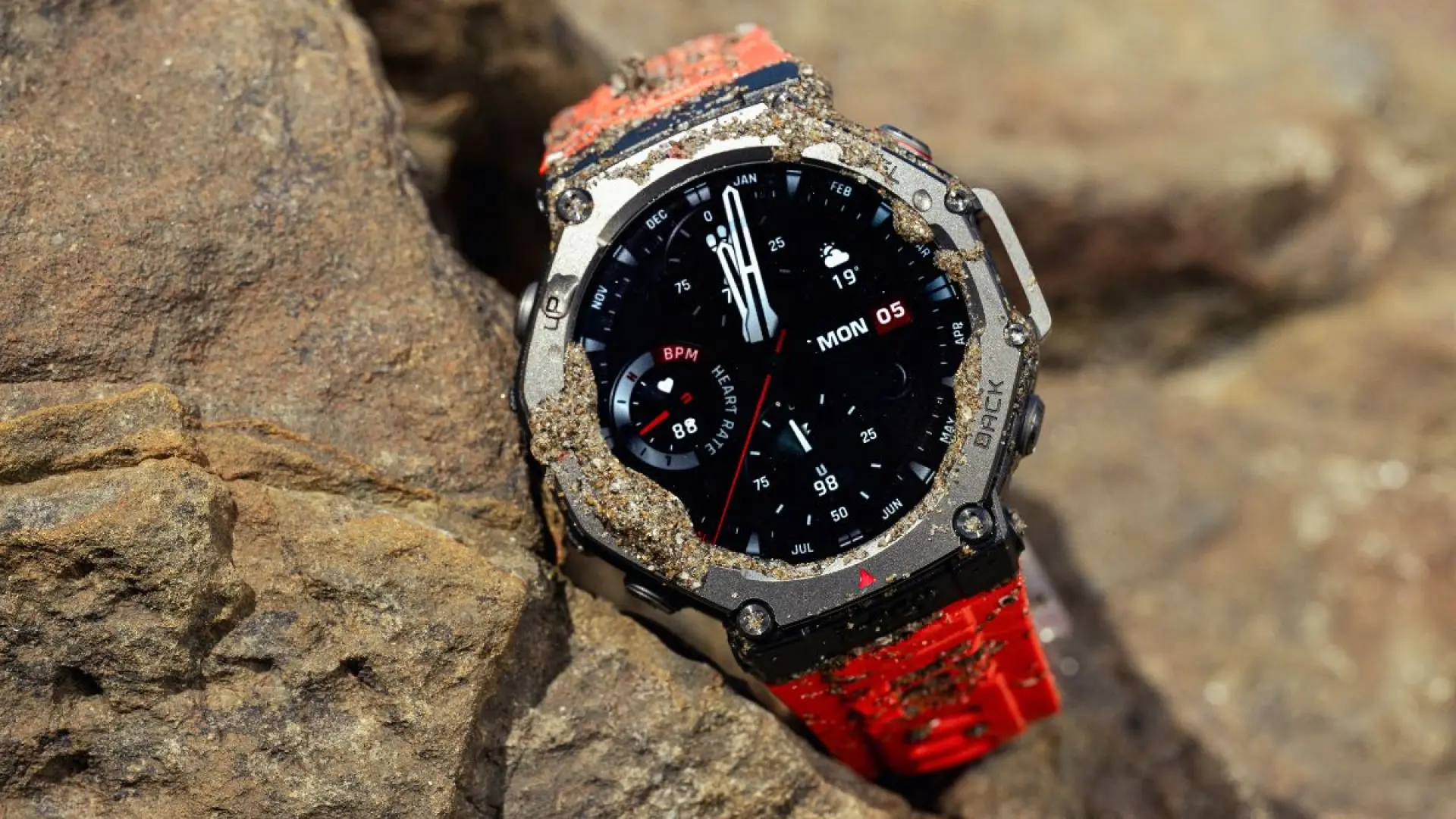
You don’t need to squint to tell which of these watches wants to go camping and which wants to go climbing in style. The Amazfit T-Rex 3 makes no attempt to hide its tactical DNA—you look at it and immediately imagine it paired with muddy boots and a carabiner. Its sharp, geometric frame and thick bezel are wrapped in a military-grade shell that’s certified for shock, dust, and water resistance. It’s all guts, no glitter.
Now put it side-by-side with the Galaxy Watch Ultra and you feel like you’ve walked into a different shop altogether. Samsung’s titanium body feels light and premium, and the sapphire glass display reflects that same air of subtle luxury. It doesn’t look like something you’d wear in a war zone, but don’t be fooled—it’s still IP68-rated and water-resistant up to 100 meters.
One looks like a tank, the other like a jet. The T-Rex 3 gives off strong “leave no man behind” energy, while the Galaxy Watch Ultra is for the hiker who also tracks their stock portfolio mid-ascent. Neither design is trying to copy the other—and that’s what makes this matchup interesting.
AMOLED powerhouses, but for different missions
We’ve worn both in the blistering sun, and yes, we’ve squinted into them during windy hikes. The T-Rex 3’s 1.5-inch AMOLED display with 2,000 nits of brightness is a flashlight disguised as a screen. You don’t need to cup your hand over it, not even at high noon.
Samsung’s option, though, feels more like a digital Swiss watch. The Galaxy Watch Ultra uses a slightly smaller 1.4-inch AMOLED panel, but with Wear OS, the smoothness and responsiveness are on another level. The swipes feel fluid, animations are slick, and the colors have that signature Samsung richness.
Here’s the thing: if all you need is data visibility—elevation, route, heart rate—the T-Rex 3 doesn’t disappoint. But if your experience is enriched by well-designed interfaces, deeper app integration, and the occasional touch of flair, then Samsung’s screen will make you smile more often.
Battery life that leaves no room for debate
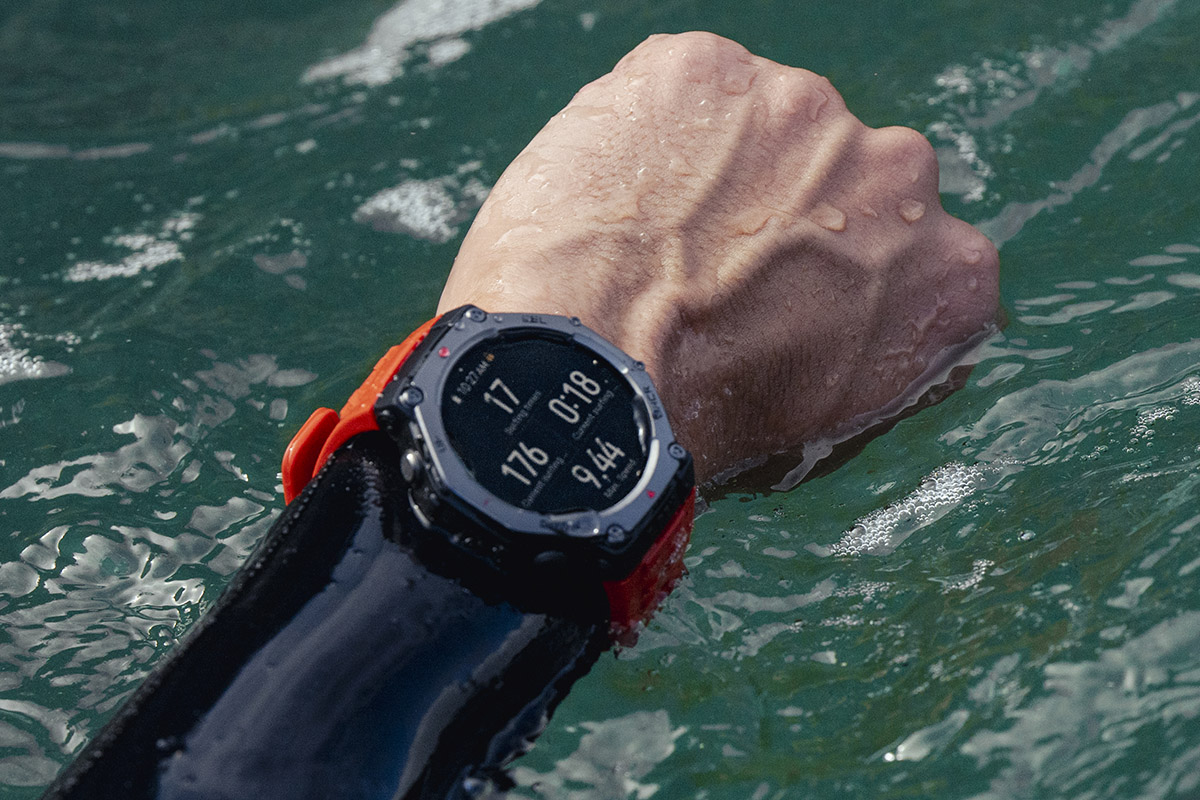
No contest here. The Amazfit T-Rex 3 crushes it with up to 27 days of battery in normal usage and about 42 hours with GPS on. That means you can throw it in your bag, take off for a week, and still come home with juice left. We’ve done it. No charger needed.
Now, the Galaxy Watch Ultra isn’t lazy—it can last around 100 hours on typical usage, and roughly 20 hours of continuous GPS. But let’s be honest: one’s a marathon runner, the other is more of a sprinter with style.
This isn’t just a difference in numbers—it changes how you use the watch. With the T-Rex 3, you don’t second-guess turning on every sensor. With the Galaxy Watch Ultra, you’re more conscious about which features drain the most.
So if you’re planning multi-day treks with no outlets in sight? The T-Rex 3 has your back without blinking.
Health and sport tracking—broad vs. deep
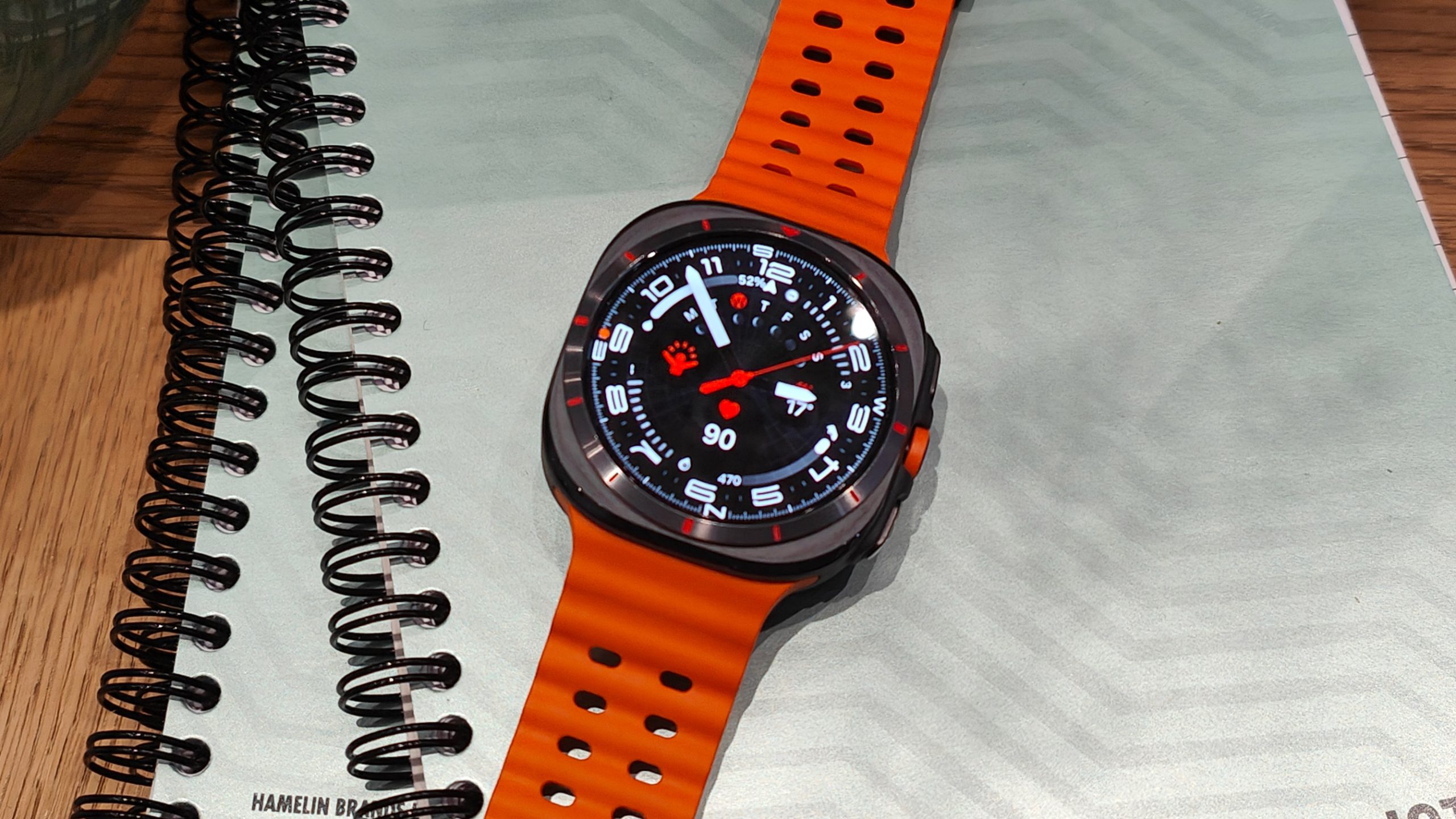
This was one of the most surprising parts of the comparison. At first glance, both watches seem stacked. But after testing them in different contexts, their strengths started pulling in different directions.
The T-Rex 3 gives you everything you need for outdoor performance: heart rate, SpO2, stress, sleep tracking, a barometric altimeter, dual-band GPS, and even support for external Bluetooth sensors like cycling power meters and chest straps. And don’t overlook the 170+ sport modes, including scuba diving up to 45 meters. You name it, it tracks it.
The Galaxy Watch Ultra? Different beast. It goes medical-grade with ECG, blood pressure, and full body composition analysis, which feels borderline intrusive—in a good way. Samsung Health becomes your dashboard, and you get tight integration with third-party apps for even deeper data if that’s your thing.
So ask yourself this—do you want a wide net or a deep dive? The T-Rex 3 is like a survival toolkit. The Galaxy Watch Ultra is more like a diagnostics lab for your body.
GPS and outdoor smarts—the long haul vs. the smart trail
We threw these watches into messy environments—tree cover, steep climbs, narrow streets. Both held up in terms of GPS accuracy, thanks to dual-band support. Neither left us hanging.
But when the minutes turned to hours and the battery percentage barely moved, that’s when the T-Rex 3 pulled ahead. With 42 hours of GPS tracking, you can leave it on all day without needing a recharge plan. It’s laser-focused on adventure longevity.
Meanwhile, Samsung makes GPS smarter, not longer. Thanks to Google Maps integration, real-time navigation, and urban location precision, it’s great when you’re in the city or navigating mixed terrain with your phone nearby. The Galaxy Watch Ultra is the one you want when connectivity matters more than duration.
Still, if you’re deep in the forest and five hours from cell reception, the T-Rex 3 becomes the obvious choice.
Smartwatch features—one goes full Android, the other keeps it minimal
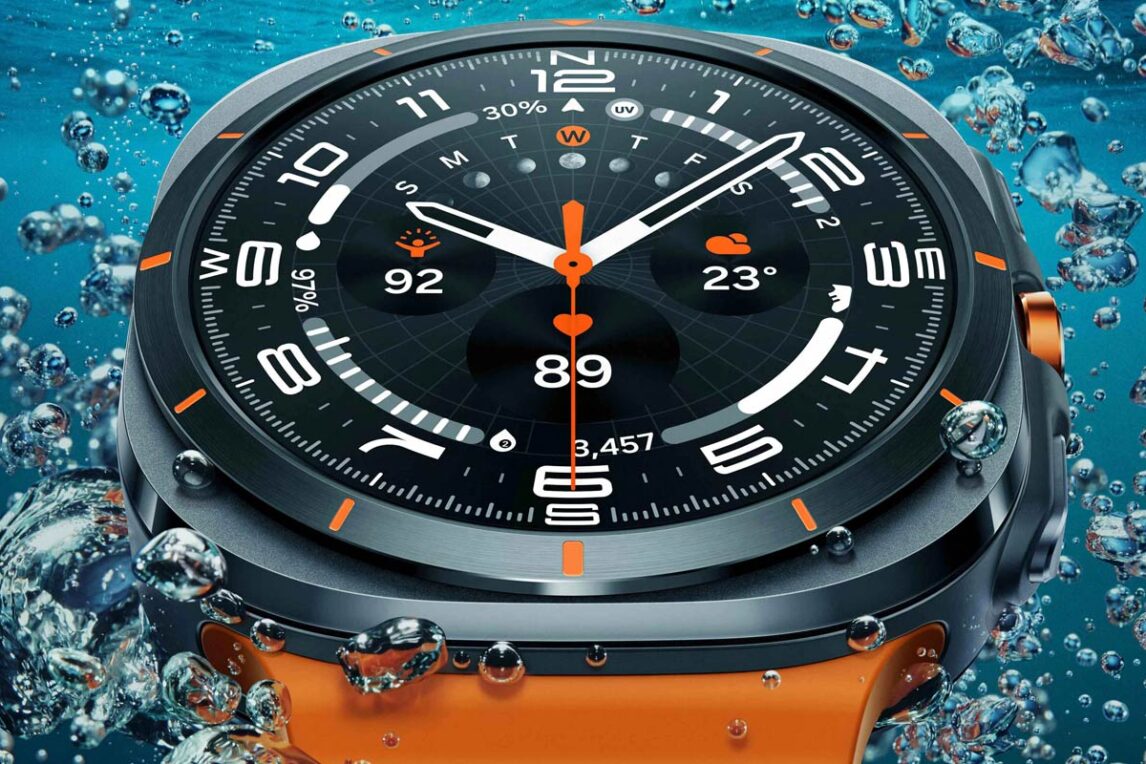
Here’s the breakaway point. The Samsung Galaxy Watch Ultra doesn’t just nudge ahead here—it laps the field. Running Wear OS, it’s a full-blown wrist computer. Google Assistant, Google Pay, message replies, full app downloads, phone calls—it’s all in.
Spotify with offline mode, calendar syncing, smart home controls—it’s more than a watch, it’s a mini-smartphone with a premium skin. For tech lovers, that opens up a world of convenience and fun.
The T-Rex 3, on the other hand, is… well, not that. It gives you notifications, weather updates, alarms, music control, and basic voice commands via the Zepp app. And that’s about where it stops.
This isn’t a failure. It’s a choice. The T-Rex 3 doesn’t want to replace your phone. It wants to work when your phone can’t.
So if your ideal watch lets you check WhatsApp and pay for coffee, go with Samsung. But if you want something distraction-free that won’t vibrate every 10 minutes, the T-Rex 3 keeps things clean.
Final thoughts—two legends, one surprise
You know those comparisons where everything feels equal and you’re left with that “depends on what you need” conclusion? This isn’t one of those.
Because once we stepped away from the comfort of Wi-Fi and power sockets, the Amazfit T-Rex 3 kept showing up. Again and again.
Yes, the Galaxy Watch Ultra is sleek, smart, and brilliantly connected. It gives you apps, insights, and the joy of smart interaction. It’s tech-forward, and it does that exceptionally well. But it feels like it’s designed for the hiker who always comes back before dinner.
The T-Rex 3, on the other hand, feels like it’s built for the kind of adventure that doesn’t check the time. That 27-day battery life isn’t just a spec—it changes how you use the watch. You don’t manage it. You trust it.
Sure, we missed some of the Galaxy Watch Ultra’s smarts when we were back in town. But in the wild? The T-Rex 3 never made us wish we had something else. It tracked, it lasted, it handled rough conditions like it was bored.
So no, it’s not the flashiest. It’s not the smartest. But it’s the toughest, and it never tried to be anything else. And maybe that’s why, in the end, it wins.

